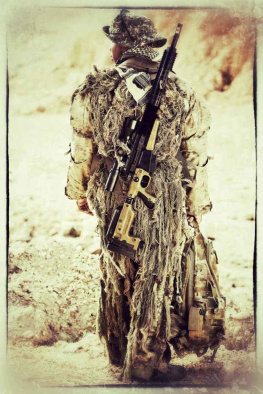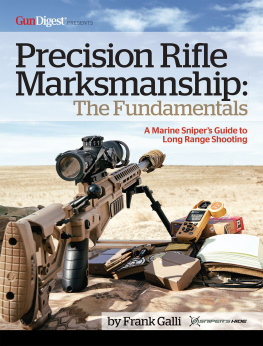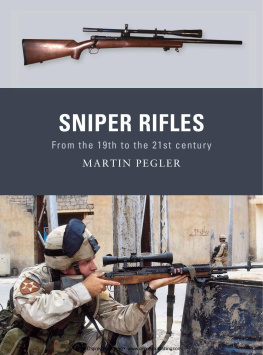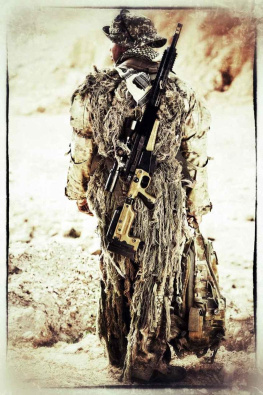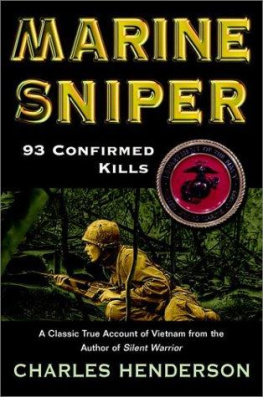The Precision Rifle B.I.B.L.E
(Ballistics in Battlefield Learned Environments)
Nicholas G. Irving
3rd Ranger Battalion 75th Ranger Regiment Deadliest Sniper
Copyright 2012 Nicholas Irving
All rights reserved.
ISBN:
ISBN-13:
Contents
There is nothing wrong with a first shot miss at extended ranges, the importance of being able to see your own shot, adjusting, and making a hit on the second shot follow up before environmentals change is an art that must be understood and achieved in precision shooting.
Nicholas G. Irving (The Reaper 33)
ABOUT THE AUTHOR
Nicholas Irving, is a former 3rd Ranger battalion Sniper Sgt.(3rd Ranger Battalions Deadliest Sniper, 33 kills in 3 months/Team reaper).
-US Army Designated Marksmanship Course
-3rd Ranger Battalion Designated Marksmanship Course
-75th Ranger Regiment Designated Marksmanship Course
-US Army Sniper School
-Long Range Precision Rifle Course
-Mountainous Precision Rifle Course
-D.O.S Defensive Marksmanship Course
-Master Sniper (Precision Rifle Course)
-Instructor for Precision Rifle Courses (L.E., Military, Civilian)
-CEO of HardShoot.com
-Instructor for Sniper, Recon, and Surveillance
-Private Contractor
-Offensive/Defensive High Speed driving
-Master Demolitions
-Multiple Iraq Deployments
-Multiple Afghanistan Deployments
-Etc.
CHAPTER 1
THE PRECISION RIFLE
The precision rifle itself is based on a few key factors in order to in fact make it a precision rifle. Unlike some of the basic rifle you can buy at your local Wal-Mart, the cumulative factors that make up a precision rifle must be at a higher quality. Along with the quality of the rifle and its specifications, your ammo must also be of higher quality ammo as well.
The Precision Rifle Barrel
The barrel of a precision rifle, are what I believe to be the key component in the rifle itself. The barrels are precisely manufactured of a heavier cross section than your off-the-shelf rifles in order to reduce the change of impact points as the barrel gradually warms. Unlike the military assault rifle barrels, the barrels are not chromed to avoid inaccuracy due to uneven treatment.
When the rifle barrels are installed into the rifle stock itself, they are to be free-floated: i.e., installed so that the barrel is to only make contact with the rest of the rifle at the receiver. The ends of the barrel are crowned or machined to form a rebated area around the muzzle to avoid asymmetry or damage, and consequent inaccuracy if the end of the barrel should make contact and damage.
Some precision rifles may also have external longitudinal fluting. The fluting contributes to the heat dissipation by increasing the surface area, while at the same time decreasing the weight of the barrel.
You may also find that a precision rifles barrel may also utilize a threaded muzzle or a muzzle brake or flash suppressor and attachment mount. The threaded muzzle allows the shooter to attach a sound suppressor, while the muzzle break reduces significant recoil felt as the rifle fires. The suppressors often have a means to adjust for the point of impact while fitted, although I have seen some that may have a change of impact as much as 1 minute of angle (MOA).
A precision rifle barrels mainly use a four-grooved, right hand twist rifling that makes a full rotation in 10 or 12 inches. Most military sniper rifles have a length of 24 inches or longer, in order to allow the propellant within the cartridge to fully burn and thus reducing the amount of revealing the muzzle flash and increasing the muzzle velocity. Although, some rifles may use shorter barrels to improve the mobility of the shooter. Shorter barrels velocity is loss is irrelevant at closer ranges when the projectile energy is more sufficient.
The heavy bore precision rifles are a growing trend in the precision rifle community. A Heavy bore rifles are intended to lessen the warpage as the barrel temperature increases when fired over a period of time with short intervals between each shot, thus lessening the departure from your original zero. The thicker heavy barrels also give the barrel a greater outer surface area, thus giving the barrel better cooling capabilities.
Accuracy
The accuracy of the precision rifle is commonly described as minutes of angle (MOA), which we will discuss in greater detail later. Law enforcement rifles are most commonly capable of a 1 MOA or MOA accuracy (approximately a 1 inch group at 100 yards, or inch group at 100 yards). Law enforcement and military precision rifles need to be at least capable of yielding 1 MOA, due to the nature of shot placement on a target. Please note that just because the rifle manufacture promotes a 1 MOA rifle, the shooter still needs to practice and understand the full dynamics of precision shooting in order to achieve its potential 1 inch group at 100 yards. Although, there are some rifle manufactures claiming to yield less than MOA rifles, the average less than 20 percent of shooters can actually produce less than MOA.
Time and time again, I have come across shooters equipped with a high end rifle with MOA, and yet the shooter produces 2-3 and sometimes even 4 inch groups at 100 yards. This simply comes down to the lack basic shooter fundamentals, and practice. Ultimately, a rifle yielding anything worse than 1 MOA, is potentially asking for problems downrange as the distance increases when precision is needed on smaller or partially exposed targets.
A 1 MOA (0.3 mrad) average extreme spread for a 5-shot group (meaning the center-to-center distance between the two most distant bullet holes in a shot-group) translates into a 69% probability that the bullet's point of impact will be in a target circle with a diameter of 23.3 cm at 800 m (about 8 inches at 800 yards). This average extreme spread for a 5-shot group and the accompanying hit probability are considered sufficient for effectively hitting a human shape at 800 m distance.
Understanding the MOA (Minute of Angle)
1 MOA=approximately 1 inch 3-5 round group at 100 yards (for shooter preference). 1 MOA in a 3-5 round group at 100 yards IS: 1.047 inches at 100 yards to be exact.
A minute of arc, arcminute, or minute arc (MOA), is a unit of angular measurement equal to one sixtieth (160) of one degree (circle21,600), or (10,800) radians. Since one degree is defined as one three hundred and sixtieth (1360) of a rotation, one minute of arc is 121,600 of a rotation. It is used in those fields which require a unit for the expression of small angles, such as when referring to marksmanship.
The MOA is the angle of an arc expressed in number of degrees. There are 360 degrees of arc to a full circle. Each degree consists of 60 minutes of arc. The distance covered by the measure of arc is relative to the circumference (total distance around the circle) it is contained within. Knowing the radius (distance to center of circle) circumference is easily calculated by using the constant pi . The ratio (represented by pi) of circumference is constant to diameter (radius x 2) regardless of circle size. The precise value of pi is so far unknown to man but is normally resolved to 3.1416 or 3.141 for our purposes. Rifle manufacturers and gun magazines often refer to this capability as sub-MOA, meaning it shoots less than 1 MOA. This means that a single group of 3 to 5 shots at 100 yards, or the average of several groups, will measure less than 1 MOA between the two furthest shots in the group, i.e. all shots fall within 1 MOA. If larger samples are taken (i.e., more shots per group) then group size typically increases, however this will ultimately average out. If a rifle was truly a 1 MOA rifle, it would be just as likely that two consecutive shots land exactly on top of each other as that they land 1 MOA apart. For 5 shot groups, based on 95% confidence a rifle that normally shoots 1 MOA can be expected to shoot groups between 0.58 MOA and 1.47 MOA, although the majority of these groups will be under 1 MOA. What this means in practice is if a rifle that shoots 1" groups on average at 100 yards shoots a group measuring .
Next page
